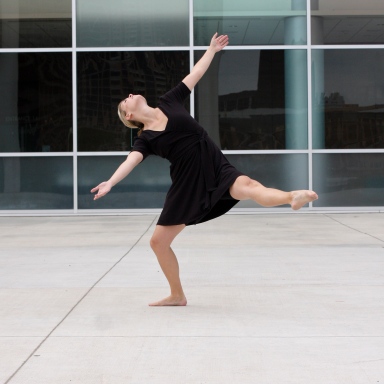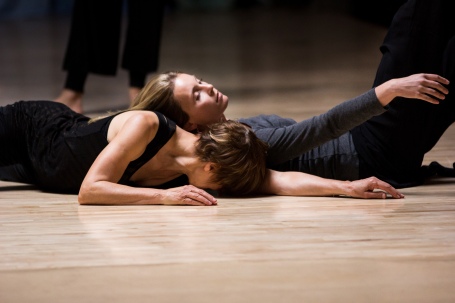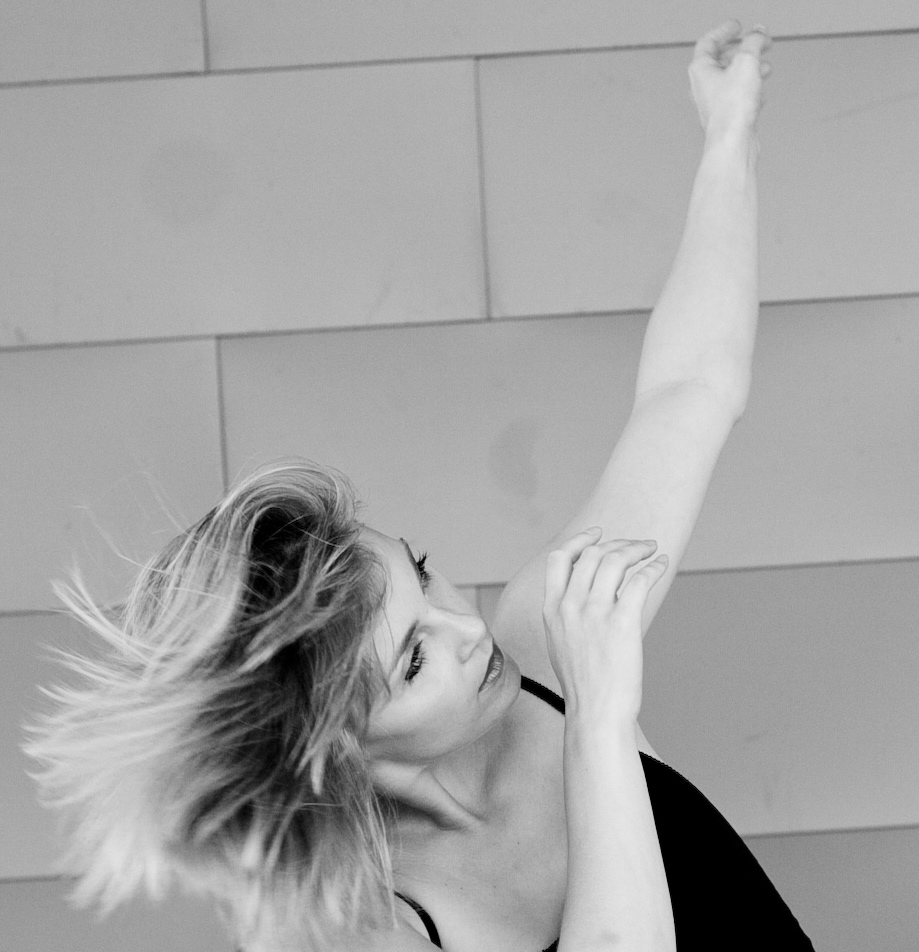Hello MilspoFANs!
Today I am happy to share our newest Artists Interview, with Mary A Chase Doll- modern dancer, teacher, and choreographer. Mary is an Army spouse and mother of two children. She now lives in Denver but will PCS to the Tampa area in July. If you’re nearby, you will have the opportunity to see some of her work live- a real treat! If not, you can follow some of the links below to view a few samples of her choreography and dance performance.
Some of Mary’s choreography and Performance…
So Grateful Denver, CO
A Circle Has No Sides choreography by Dr. Karl Schaffer, Santa Cruz, CA
Someday Sunset Center, Carmel, CA
The Window SpectorDance, Monterey, CA
Sister Dance Repertory Theatre, Austin, TX
Silverstein Suite Kansas State University, Manhattan, KS
Mary has some great advice for artists dealing with “it all” and more! I am reminded by her story that life, like dance, is dynamic and temporal- one moment is not a person’s entire story. Our life stories and identities are made up of widely varying moments that sometimes complement, sometimes contrast, and sometimes crash into one another. There are some years that you will be crazy productive artistically, some periods when family is your focus, some years for recovery and self-care, and some miraculous periods when you will actually find a gorgeous but probably temporary balance (like a moment of suspension in a movement sequence or leap).
Mary also reminds us of the importance of networking purposefully when you enter a new community (and even before you arrive). Curate what you share first carefully, suggests Mary, “Show or do a small amount of your best. Less is more in this case. Make a first impression with the work you are most proud of.”
After the interview, check out her website www.chasedance.com or connect with her by leaving a comment here on the blog or over at MilspoFAN on Facebook.

MilspoFAN: You have a very thorough and impressive professional bio on your website, www.chasedance.com, where our readers can find an overview of your professional journey. Tell us a little about yourself and journey as a military spouse, including where you are today.
Mary: Our journey has been… well, let me start with this: My husband, Tim, and I have known each other since we were in elementary school. I have been dancing since I was 2, my career choice was determined, and then Tim was in the military. Tim saw my dance performances before one’s life partner ever should be allowed to. Though of course now his career determines where we live, pays most of the bills, and allows me to keep my career going.
Some people wonder about how a dancer and a soldier ever figure out how to make things work. I think in our case, the dedication, perseverance, exactitude, thankless long hours and the toll on our bodies are similar. I will never forget when after spending our first three months of marriage apart (sigh), Tim came home from training and said “reconnaissance is like the choreography of strategy”. So, we try to embrace the similarities and not dwell on the portion that sometimes feels at odds.
We now, after nearly fifteen years of marriage, have a nine year-old daughter born during a deployment in 2008 and a three year-old son who was born in Kuwait in 2014 during my husband’s year of IRT (In Region Training). By the time our son was six months old he had more stamps in his passport than most well traveled American adults. Since 2002 we have PCSed 7 times, getting ready for our 8th this summer. In 2014, after Kuwait, we moved to Denver, CO for Tim to do ACS (Advanced Civil School) at the University of Denver.
Here in Denver, I founded a dance program at a middle school with a newcomer center for immigrants and refugees, and I started getting more involved in the Denver dance community as time went on. However, in December of 2015 our then 20 month-old son was diagnosed with ALL-precursor B Leukemia. In April of 2016, four short months later, Tim left for training and then deployed (our fifth year apart). This time being an artist was the best possible and worst possible career. Though our son’s prognosis is good, this last year has been a mixture of making some of the best work of my career and dealing with some the saddest and hardest moments of a lifetime.

MilspoFAN: How did dance discover you and when did you know you would make it your life’s work?
Mary: I danced throughout my childhood. In 1994 I auditioned for a pre-professional Modern Dance company at Arts in Motion in St. Louis, MO. My two years dancing at Arts in Motion were when I transitioned from loving dance to taking dance seriously enough that I couldn’t imagine doing anything else. I did my undergrad at the University of Illinois (UIUC) and my master’s degree at the University of Texas at Austin. I have enjoyed a career dancing all over the United States and Internationally. Though military moves do have an impact, I always make the most of each move. Now twenty-three years since that audition I still feel excitement and the power dance has to enliven and inspire. Today after a long weekend of rehearsals for my upcoming show, dance continues to give me a sense of being myself that nothing else does.
MilspoFAN: Where can we see your work?
Mary: Unfortunately, unlike writers or painters you cannot pick up a book or go to a museum to see my work at your leisure. My work is temporal and depends on a cast of dancers, a performance venue and a producer. Though of course you can (and please do!) watch video or look at pictures, dance is best experienced live. I would bet that some musicians feel similarly. However, there is no way to capture the true essence of movement in recording– unlike, I would argue, the advancements musicians enjoy.
I have had the immense pleasure of working with dance companies, Universities and Schools of Performing Arts everywhere the military has moved us here in the United States. Currently in Denver at Merrill International Middle School immigrant and refugee students perform my work. Also, in my neighborhood at Park Hill Dance Academy (PHDA), I teach all of the contemporary classes and choreograph on the companies. Also in Denver I have danced professionally for Daughter Cells Dance and am currently working with Tara Rynders Dance.
Right now I am producing a new work for the 43rd time in my career. This time I am making a forty-minute, twenty-five dancer work titled Where You Hang Your Heart. It is a pleasure to be busy doing what I love, but the toll of having Tim deployed does weigh heavier than when he is home. I am grateful to be working with people here in Denver who help make this possible. Unfortunately though, most arts organizations have little understanding of the obstacles that come with military family life.
MilspoFAN: Why did you decide to get your CMA (Certified Movement Analyst)? Explain to our readers what that is and how you apply the Laban and Bartenieff concepts in your choreography/dance work. (Dear readers, this is where Mary and I geek out over movement systems!)
Mary: Though my lens is dance, many physical therapists, actors, and professional athletes alike use Laban Movement Analysts and the Bartenieff Fundamentals to enrich their understanding and approach in analyzing movement. To earn my CMA certification, I attended the yearlong program at the Laban/Bartenieff Institute of Movement Studies (LIMS) in 2000 in New York City. Laban Movement Analysts and Bartenieff Fundamentals go hand in hand. Laban Movement Analysis examines and interprets movement through four lenses: Body, Effort, Shape, and Space. Irmgard Bartenieff then brought the Laban systems to the United States and she deepened Rudolf von Laban’s work with her body awareness and movement patterning methodologies that tap into the origins of human movement development.
I have an analytical disposition. All of the work I do choreographing, teaching, and performing are colored by the time I spend thinking and writing about how the movement fits together. Though there are many fabulously successful dance artists who do not mull over things to such a painstaking extent. Some might say I over-analyze. Regardless, this system of looking at, talking about, and developing new movement was right for me from the beginning and still serves me everyday.
An example of this is the language I use as a CMA to talk about movement. Much of what I say to my dancers when it comes to performance quality and initiation of movement steers away from the codified language of the Ballet or historic Modern traditions. My favorite aspect of the Laban work that is well supported in Bartenieff Fundamentals is the analysis of the dancer’s use of Space. Much like in music there are scales to practice and perform to perfect our bodies’ use of Self Space, called the Kinesphere and the general or Group Space called the Dynamosphere.
MilspoFAN: You have danced and produced choreography all over the world. How much of that is by design versus as a result of your spouses’ career relocation?
Mary: It is a little of both. The sheer happenstance of moving as a military family has afforded me the opportunity to have my work produced in many more locations than I think I otherwise would have had. However, none of my international touring has been the result of a PCS.
Though we have lived abroad in Kuwait, I did not dance while we lived there. As I said earlier, I was pregnant with our son at the time and had just come off of a whirlwind year. I needed a break. I had been dancing for three different companies, teaching at two different Performing Arts Schools and had my work produced at a few different venues… whew, I am tired just writing that! Some years are just more productive than others.
MilspoFAN: Tell us about the process of establishing yourself in a new dance community after each move. How do you find dancers, producers, and collaborators in a new location?
Mary: As I just mentioned, all of the shows I have performed or choreographed abroad weren’t because we moved. They came by being at the right place at the right time and talking with the right person. I realize most people think that dance gets on stage through an audition process. Honestly, that has never happened in my case having danced on four continents. I have never, not in New York City, not in Seattle, not in the Bay Area, not in Kansas City, or Austin, or anywhere been to a proper “cattle call” audition.
So, maybe my experience might be some advice for Military Spouses looking to further their career in the arts. Networking. Sometimes that means through the Internet. Usually though, it is YOU in the room talking with people, promoting your work. Cold calling. Making follow up calls and emails. Showing up to other people’s shows, readings, or performances. Talk about the work you do to anyone in any social setting. Someone might be interested in funding your project. Someone might be looking for exactly what you do but just hasn’t met you yet.
Once you make contacts you become a potential candidate in the minds of the curators and producers. If they remember you and connected with you the work will come, and when the time is right, show or do a small amount of your best. Less is more in this case. Make a first impression with the work you are most proud of. I had to learn this the hard way. I now do not introduce my work to a new community of artists with an “in-progress, experimental avant garde work.” Save that for your community of fans.
I mentioned earlier that being in the arts and also being a Military family has struggles and obstacles. I think it is fair to say that these bumps in the road could be challenging enough to prevent an artist to continue in their career. I hope that my perspective inspires you to get back at it, fiercely loving and creating your art form.
MilspoFAN: What’s next for you?
Mary: A PCS is coming up this summer. As my husband finishes his yearlong deployment he will be headed to MacDill AFB to work at CENTCOMM. The kids and I will move down to Tampa midsummer. Though the physical move happens in July I already have made several contacts to keep the momentum going. Over the years and the moves I have equally taught and had my work produced in Universities as I have in public schools and private institutions. Though I prefer to work in Higher Ed I always keep my eyes open to find the best fit for our military life. That is the reality. Family is first. If you live in Florida and you are reading this, you might even hear from me!
Thank you, Mary, for sharing your story with us! Now it’s your turn, dear readers. What part of Mary’s story moved you? Do you have your own questions for Mary? Tell us in the comments below or visit MilspoFAN’s Facebook Group to share your thoughts.




